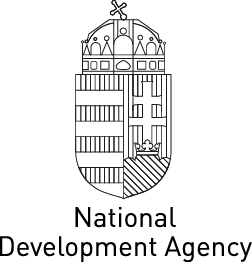Another Major Project: Development Plan of the Second Phase of the Small Balaton Water Protection System Approved by the Government27 November 2009
 The Government approved and is submitting the funding request of the major project "Implementation of Phase II of the Small Balaton Water Protection System (KBVR)" to the European Commission.
The Government approved and is submitting the funding request of the major project "Implementation of Phase II of the Small Balaton Water Protection System (KBVR)" to the European Commission.
In the case of a positive decision, funding amounting to nearly 8 billion HUF would be granted for developing this high priority Balaton region. Together with this decision, 27 major projects have now been approved by the Government, out of which 11 are currently awaiting approval in Brussels, whilst 13 major projects have already received a nod of approval from Brussels.
The way in which Hungary submitted the second highest number of major projects after Poland among EU member states, although first in terms of the ratio of the total number of major projects planned demonstrates the success of Hungarian development policy. These investments are extremely significant also because of how major investments prepared to a high standard will represent responses to the challenges the building industry and Hungarian labour market is facing due to the international financial and economic crisis.
A reservoir with a water level control system where dykes determine the flow direction was constructed from the beginning of the 1980s during the first phase of development of the Small Balaton Water Protection System. Within the framework of this development, Lake Hídvégi was created; the valley weir sealing off Zala Valley was constructed, as was the southern cut-off wall and the Zalavár embankment sealing the northern and western boundaries of the Lower Reservoir. It soon became evident to experts that this water protection system needed to be further developed in a way that nature protection considerations are equally prioritised, alongside water quality protection. The EU-funded project bearing the title "Implementation of Phase II of the Small Balaton Water Protection System" was developed within the framework of the Environment and Energy Operational Programme to implement this initiative. This investment is envisaged to be implemented through co-financing with the help of EU funding amounting to 6.57 billion HUF and national funding amounting to 1.16 billion HUF.
According to plans, the water level of Small Balaton and the Zala River will depend on the natural fluctuation of water levels. A flexible flow control system will be set up to ensure this, with the help of which it will possible to ensure that the least eutrophic water will always be channelled into the lake, as an outcome of which it will be possible to ameliorate and protect the quality of the water of Lake Balaton.
The upgraded monitoring system will help ensure ecological water demands in Small Balaton. The plan equally extends to include the construction of 2 fish ladders, which will enable fish to pass from Lake Balaton into Small Balaton and through to the Lower Zala Valley during the spawning season regardless of water levels. Over 2.2 kilometres of existing embankments are expected to be raised and new embankments are expected to be built along a nearly 7-kilometre-long stretch. Over 15 kilometres of existing canals will be rehabilitated and a new 7-kilometre-long canal will be constructed. 20 new structures will be built and 21 existing structures will be also renewed. The mainstream will bypass Ingó Grove to protect the extremely rich flora and fauna; consequently, the water level aligned to the natural flow will have a beneficial impact on the natural habitat of the region. The natural habitat will also be reconstructed in the Zalavár drainage area and a new reservoir will be created by integrating Zimány Grove and Vörs Grove where floodplain habitats periodically submerged in water will be created. Tourism in the region, and therefore also the region’s competitiveness, is expected to increase by attaining these goals. Biodiversity, as well as the number of flora and fauna specimens are envisaged to increase by ameliorating the ecological state of this region. New habitats will be created and the environment of settlements will also develop, which has a major population retention impact.

